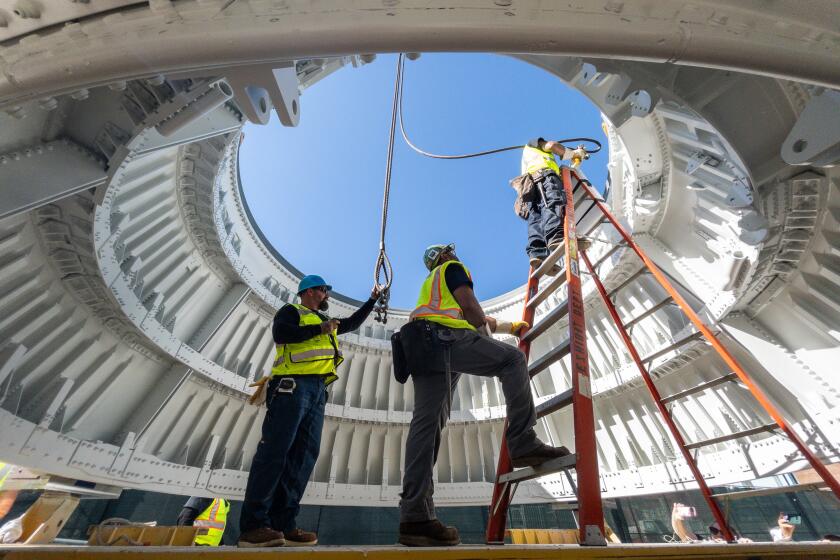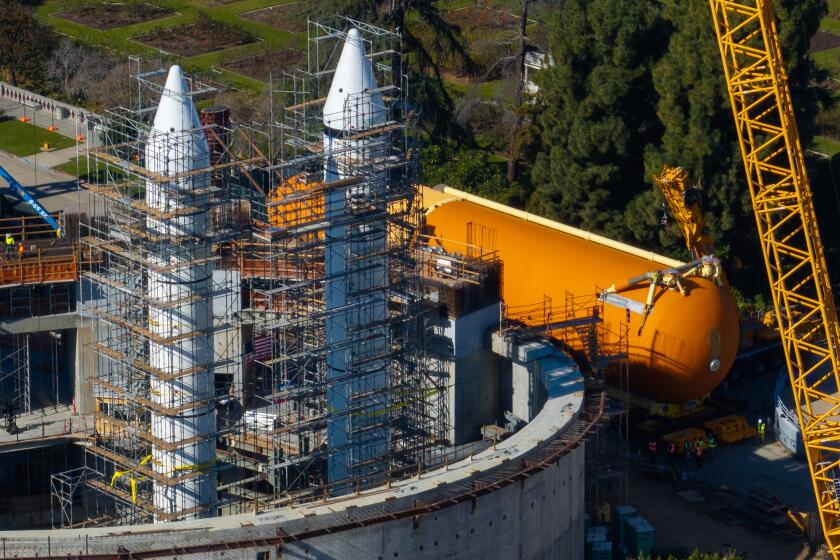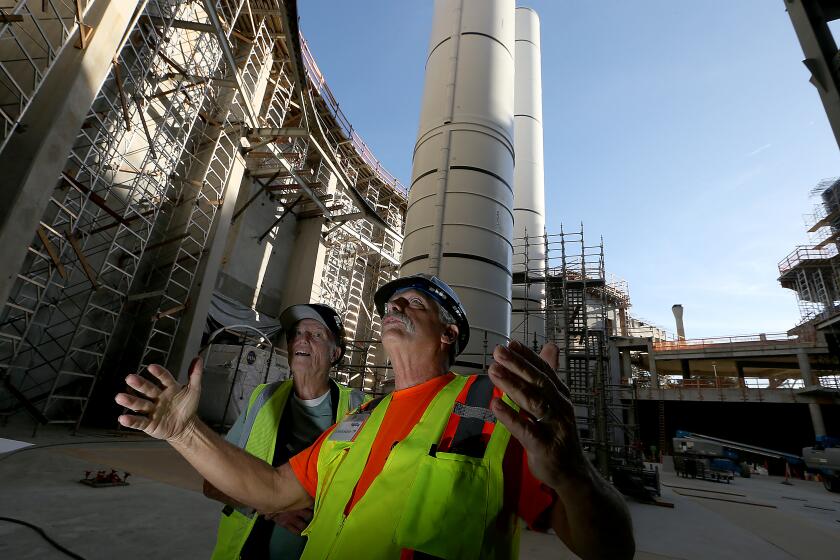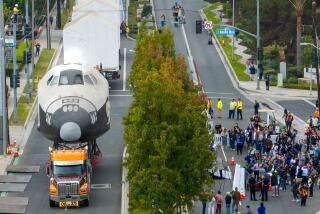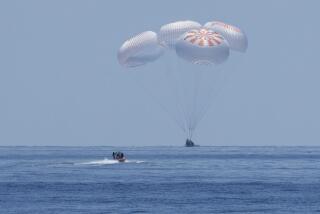Space shuttle Endeavour soaring into place at final museum home
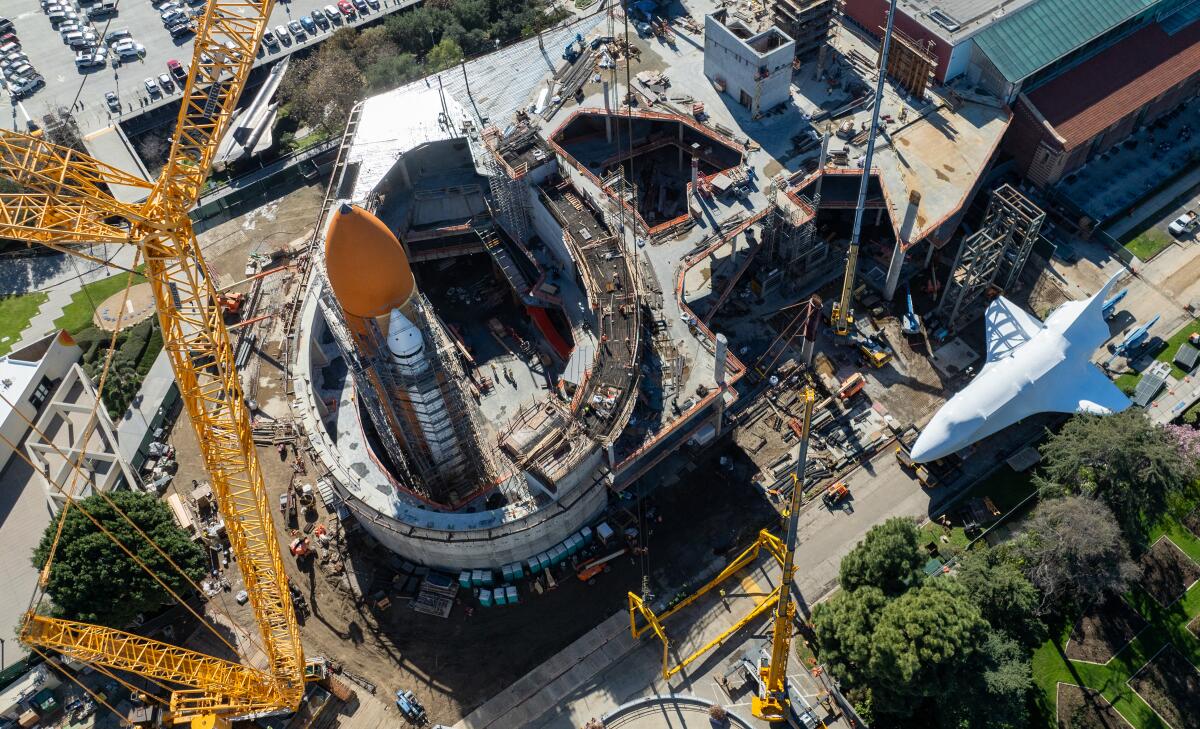
Barring weather delays, the space shuttle Endeavour will undergo its final, historic lift starting Monday night, a maneuver no other retired orbiter has undergone.
Plans for the coming move — setting into place the crown jewel of the new Samuel Oschin Air and Space Center — have been in the works for more than a decade. First, a pair of cranes will hoist the shuttle from a horizontal position to a vertical one; the spacecraft will be attached to a sling, a large metal frame that’ll support it during the move. An 11-story crane will lift the tail of Endeavour, while a 40-story crawler crane — about the height of City Hall — will lift the nose.
Once the shuttle is pointed toward the stars, the shorter crane will be disconnected, leaving the taller crane to gently swing the orbiter to its final position and lowering it to be affixed with the giant orange external tank. The external tank is attached to twin solid rocket boosters, which are connected to the exhibit’s foundation.
Once complete — and the rest of the museum is constructed in the coming years — L.A. will be home to the only retired space shuttle displayed in a full-stack arrangement as if ready for launch.
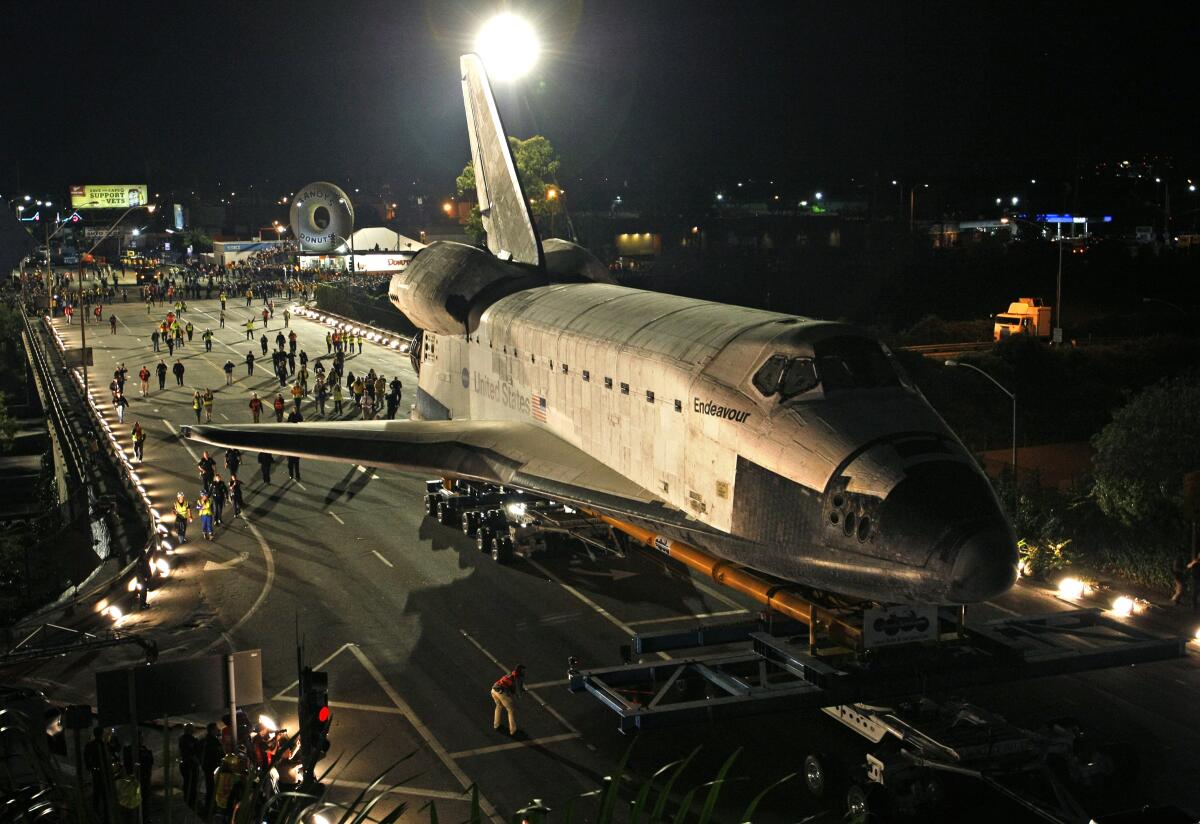
There will be two parts to the move. The first — the so-called “soft mate” — is scheduled to begin around 10 p.m. Monday and could take hours.
“That’s the part of lifting it into the building and getting it close to the orbiter,” said Jeffrey Rudolph, president of the California Science Center.
The second part will be to “capture” Endeavour to the external tank.
“It is extremely sensitive to get it in exactly the right position,” Rudolph said. “It puts all the attached hardware in the right place on the orbiter. And several of the pieces inside the orbiter that it attaches to are very fragile, so they will do this very slowly.”
Once that is done, everything will still need to be tightened, Rudolph said, but the move will effectively be complete. It’s believed that by Thursday, everything will be “hard mated, meaning everything will be torqued, bolted as it will be forever. And the sling will come off, and we’ll say, ‘Done,’ ” he said.
The schedule could change because of weather, as strong winds would force a postponement of the move.
After being on display at the California Science Center for more than a decade, the Endeavor began it’s final move to a new center as it’s permanent home.
Nothing should change after that until the museum opens the payload bay doors in a few years when Endeavour is ready for public display, Rudolph said.
There are different challenges lifting the shuttle than the external tank, which was completed earlier this month. The tank is so large that, as it was lowered, there was less than an inch of space between it and the solid rocket boosters.
With the Endeavour orbiter — the last space shuttle ever built — crews will need to maneuver an object with a 78-foot wingspan and get “everything absolutely level and aligned properly, and extremely gently,” Rudolph said.
“There are a few places where there’s some challenging parts in the lowering of it because of the tight fit with the wings and vertical stabilizer,” he said. “And then the challenge is actually bringing the orbiter — ‘capturing it’ — at the three attach points.”
Because Endeavour is essentially a glider with a massive wingspan, it’ll be difficult to guide it down if there are strong winds.
“Wind and wings don’t go well on a crane,” Rudolph said.
“This has never been done like this before, with cranes and outside and at a construction site,” he said.
When the shuttle was stacked with its external tank and solid rocket boosters at the Kennedy Space Center in Florida, the assembly was done inside NASA’s Vehicle Assembly Building — one of the largest by volume in the world, rising more than 50 stories and equipped with plenty of cranes and platforms from which to work.
The move was delayed by winds, but crews eventually raised the massive tank Friday at the California Science Center before nearly finishing Saturday.
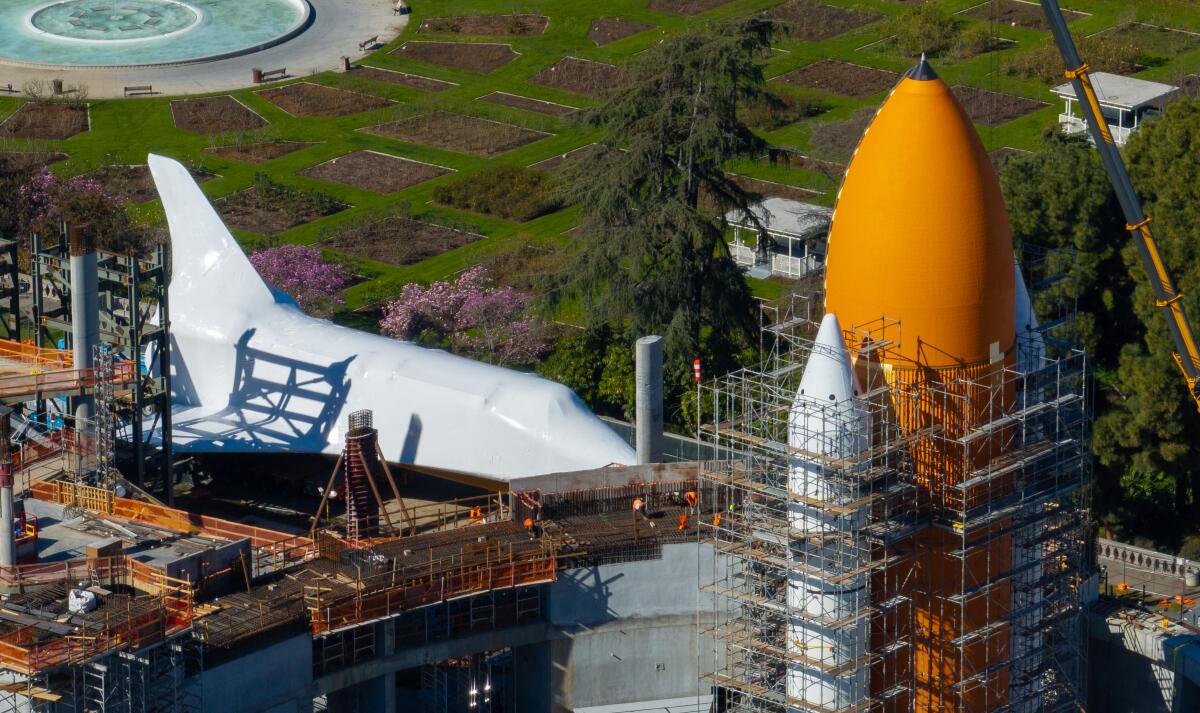
In Los Angeles, crews have had to painstakingly build up, take down and reformat scaffolding to enable them to make the proper connections.
There have been last-minute changes too. During the arrival of the external tank, there were times when the crew “had to scurry up and remove some scaffolding pieces and reconfigure it while we were doing the lowering,” Rudolph said.
The main lift of the orbiter is likely to take one night. By contrast, the external tank lift took two nights. The first was delayed by winds, although crews were able to begin the lift before stopping work mid-morning. On the second night, the tank was able to be lowered further, in between the solid rocket boosters.
Officials hope to livestream the latest lift. A livestream for raising the external tank was scrapped because of technical difficulties, and officials are working to iron out those problems ahead of Monday’s orbiter move.
Crews successfully lifted into place giant rockets at the California Science Center, the first large components installed at the future home of the space shuttle Endeavour.
A veteran of 25 space trips from 1992 to 2011, Endeavour made its last flight in 2012, ending a cross-country journey at Los Angeles International Airport before undertaking a three-day trek along city streets to the California Science Center. For 11 years, Endeavour was displayed in a temporary hangar, the Samuel Oschin Pavilion, as the museum worked on a permanent home. Endeavour was taken off display Dec. 31.
The full-stack configuration is so tall that the new museum will rise 20 stories to make room for it.
To keep views unobstructed, the building has been engineered with no vertical supports except its walls. It will feature a a diagonal grid developed by engineering firm Arup and covered by a stainless-steel facade. Such “diagrids” have been used in other tall buildings, including the 46-story Hearst Tower in New York City, the iconic 40-story ovular Gherkin skyscraper in London and a section of the egg-shaped London City Hall.
Once the shuttle full stack is in place, the rest of the museum will be built around it. It could be a few years before it is open to the public, given the construction schedule and additional time needed to install exhibits.
More to Read
Sign up for Essential California
The most important California stories and recommendations in your inbox every morning.
You may occasionally receive promotional content from the Los Angeles Times.
